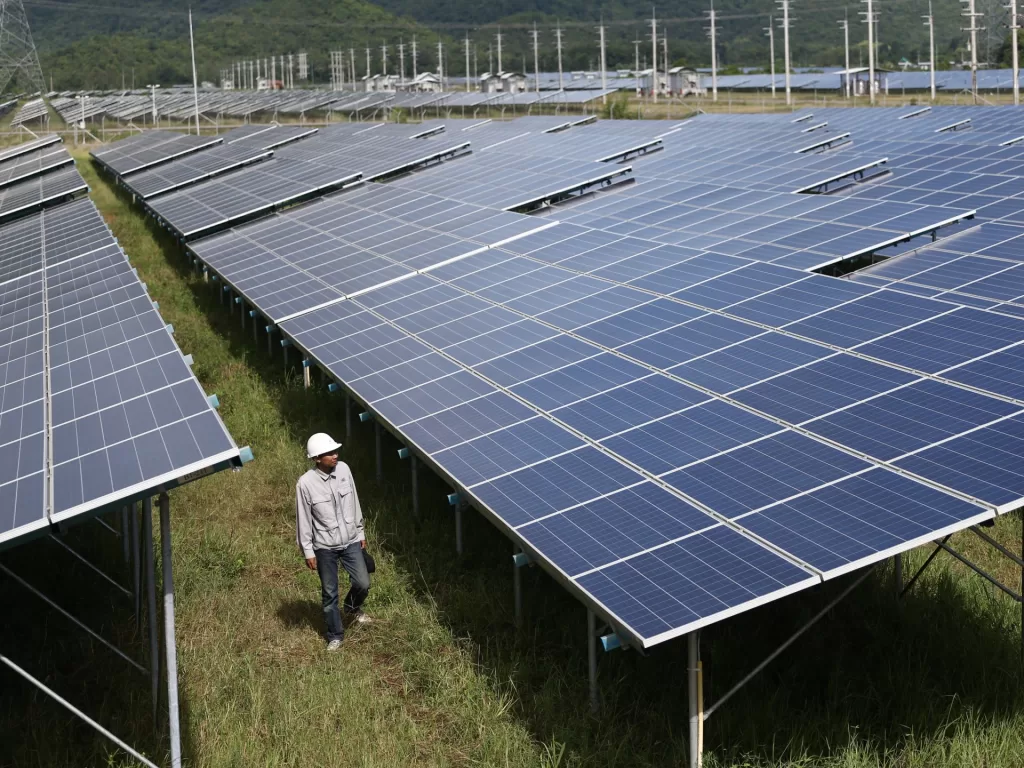ASEAN’s 10 members met the entirety of region’s rise in electricity demand last year through fossil fuels, report says.
Southeast Asia is at risk of deepening its dependence on fossil fuels as it tries to meet surging demand for electricity, an environmental think tank has warned.
The 10 nations of the Association of Southeast Asian Nations (ASEAN) met the entirety of the region’s 3.6 percent rise in electricity demand last year through fossil fuels, the United Kingdom-based think tank Ember said in a report released on Tuesday.
ASEAN’s share of energy generated by renewables, meanwhile, fell to 26 percent compared with 28 percent in 2022 amid a decline in hydropower production due to droughts and other extreme events, the report said.
Carbon emissions grew by 6.6 percent last year, representing an additional 44 million tonnes of CO2 in the atmosphere, according to the report.
Top coal polluters included Vietnam, Malaysia and the Philippines, while Singapore and Thailand’s emissions mostly came from natural gas, according to the report.
Ember said the region’s slow energy transition means it is missing out on the benefits of renewables, including the declining cost of solar and wind power, which are now cheaper than fossil fuels.
“Continuing at this pace of transition risks ASEAN becoming more dependent on fossil fuels, missing opportunities presented by emerging clean energy technologies and economics, and failing to meet climate targets,” the think tank said in its report.
“Meanwhile, electricity demand continues to grow rapidly, making it more important than ever to meet this demand with clean energy.”
Ember said two of the most promising long-term solutions are solar power and wind power, as hydropower faces increasing reliability issues due to droughts and changing rain patterns.
The report came as the International Energy Agency (IEA) on Tuesday warned that Southeast Asia would need to invest $190bn – or five times its current rate of investment – to achieve its climate goals by 2035.
Even with clean energy sources projected to meet more than one-third of the growth in energy demand, the region is still on track to increase its carbon emissions by 35 percent between now and 2050, the Paris-based intergovernmental organisation said in a report.
Demand for electricity in Southeast Asia is set to grow at an annual rate of 4 percent, according to the IEA report.
“Clean energy technologies are not expanding quickly enough and the continued heavy reliance on fossil fuel imports is leaving countries highly exposed to future risks,” the IEA’s executive director, Fatih Birol, said.
Courtney Weatherby, the deputy director of the Stimson Center’s Southeast Asia programme, said that renewables like solar power have great potential but there are still many institutional roadblocks in the way.
Many ASEAN countries are trying to modernise and expand their energy generation capacity at the same time, leading to conflicting priorities, Weatherby said, while renewables still face problems like storage, grid management and the inability to produce power on demand during peak hours.
“Most countries in ASEAN are coming from a relatively low starting point for solar/wind deployment and this means that even rapid expansion will not lead to a full transition in a timely manner,” Weatherby told Al Jazeera.
“More importantly, the mandate for power utilities is to ensure that the power supply is stable and reliable in order to ensure both access to power for consumers and also support ongoing economic development through attracting investment, often in manufacturing,” she added.
